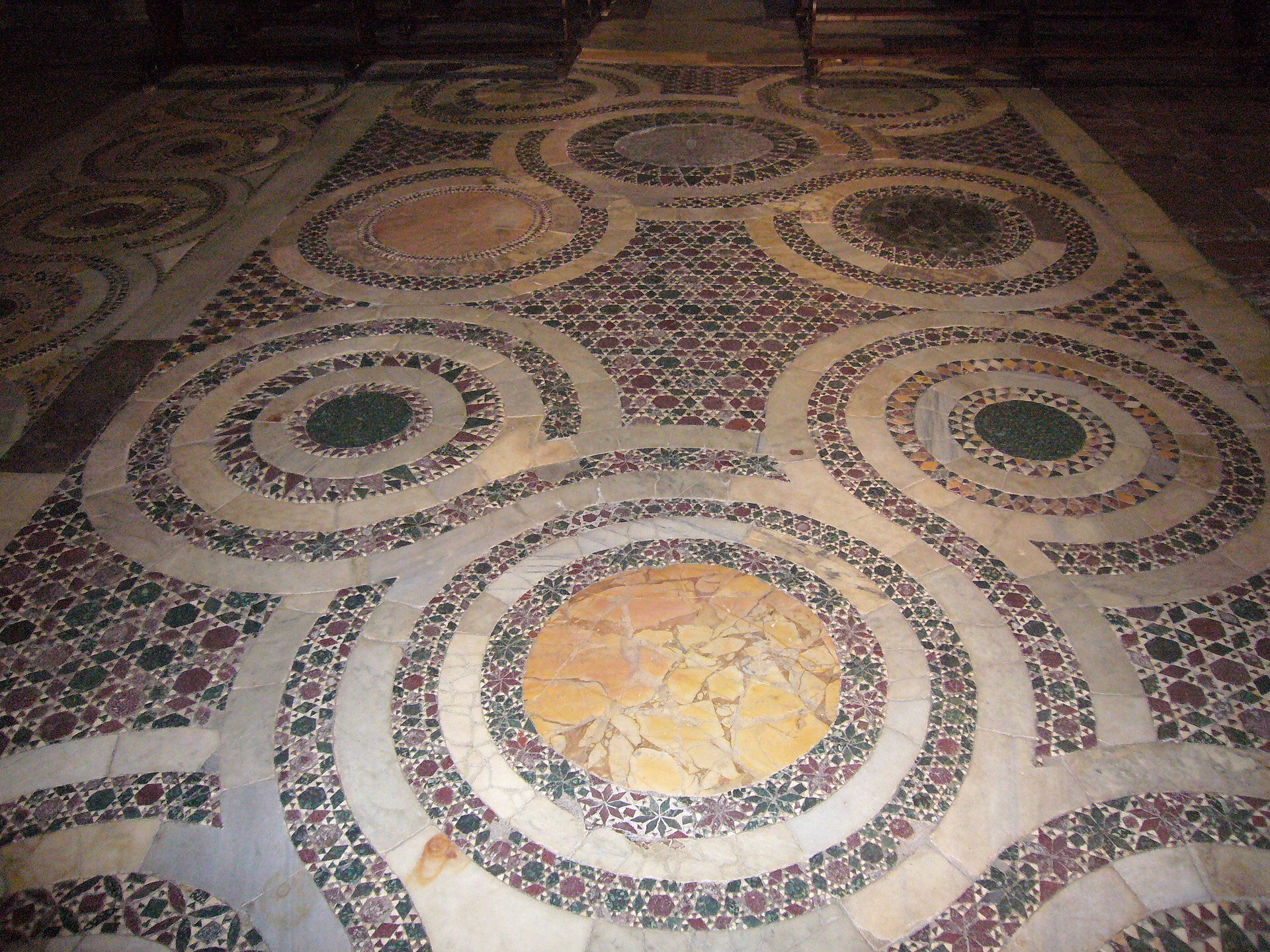This ancient symbolic word is not really one to sing, but points down many cultural roads through history, as well as unearthing a variety of lesser known music. A quincunx is most commonly the term for geometric pattern consisting of five points arranged in a cross, with four of them forming a square or rectangle and a fifth in the centre, and is most often seen on five-dotted dice, playing cards, and dominoes.
Roman coins
Its origin dates back to Roman times, around 200BC on coins, meaning five twelfths of an 'as', the word for Roman standard bronze coin. In English it first appeared in around 1545, also as 'five-twelfths of a pound or as'. It began to be an optimal pattern associated with planting trees for an orchard and remains so today. And the Oxford English Dictionary cites a 1647 reference to the German astronomer Kepler for an astronomical/astrological meaning, an angle of 5/12 of a whole circle.
And so this basic symbol of five dots, corners or has spread into a variety of contexts. In heraldic terms, also known as. saltire, the pattern is on the old Portuguese flag, it symbolised the five departments of the 19th-century Republic of Yucatán flag. The flag of the Solomon Islands features a quincunx of stars.
From the Portuguese flag
A quincunx is one of the quintessential designs of Cosmatesque inlay stonework.
San Benedetto in Piscinula, Rome: A Cosmatesque pavement inside the church showing one of the quintessential cosmatesque designs, the ‘Qincunx’
In architecture, a quincuncial plan, also defined as a "cross-in-square", is also the plan of an edifice composed of nine bays. In Khmer architecture, the towers of a temple, such as Angkor Wat, are sometimes arranged in a quincunx to represent the five peaks of Mount Meru. Here is an example in Russia:
St. Michael's golden-domed monastery in Kiev
The bean machine, also known as the Galton Board or quincunx, is a device, that resembles a bagatelle game invented by Sir Francis Galton to demonstrate the central limit theorem via binomial distribution approximates a normal distribution, showing regression to the mean or "regression to mediocrity". But what does all that mean? Beans or beads are dropped onto a vertical board with interleaved rows of pegs, each bounce either left or right as they hit the pegs with a 50% chance of each. While it's a 50-50 chance which way an individual with go, the overall effect is predictable, with a bell curve result, reflecting all kinds of statistics in society - average sizes, behaviour and so on. Here's a demonstration:
Some people adopt forms of the quincunx as a personal symbol for a bracelet, pendant or tattoo. It's variously seen as representing fertility, is common in astronomy and astrology, and early African American scientist Benjamin Banneker describes a dream in which the quincunx is the shape of the soul after death. The English physician Sir Thomas Browne in his philosophical discourse The Garden of Cyrus (1658) elaborates upon evidence of the quincunx pattern in art, nature and mystically as evidence of "the wisdom of God."
Various quincunx shapes - applied to dice, astrology and magic
The quincunx also comes in many books, particularly title novel by Charles Palliser's elaborate, long 1989 novel set in 19th-century England, which also uses this shape to mimic the plot structure. Lawrence Durrell's novel sequence The Avignon Quintet is arranged in the form of a quincunx. And the poet Séamus Heaney describes Ireland's historical provinces as together forming a quincunx, as the Irish word for province cúige (literally: "fifth part") being Ulster (north), Leinster (east), Connacht (west), Munster (south) and Meath (the centre dot, and now a county within Leinster).
But where does all this lead us in music? Quite a variety of styles using the term for a song title. Here is new wave/funk-postpunk band Dojoji - song Quincunx from their 1984 self titled mini-LP.
By contrast, there is a 1960 modern classical piece by composer Elisabeth Lutyens played by the BBC Symphony Orchestra.
Moving on to jazz and folk, there is this number by Heroes of Toolik:
And here also a live performance version:
Some bands have adopted quincunx as their name. Seattle's heavy rock band Quincunx, for example. This, from their Self Titled album, is the song Tiny Pearls of Wisdom:
The quincunx, going darker in style still, also seems to have inspired the death metal spectrum of music:
And there are also oodles of quincunx-inspired electronica artists out there. Here's one, also known as TsukiNoKemuri, and sometimes as Contraholiday, and Calculator Heist, with a song from catchily titled Crystal Aegis Prototype:
So then, care to picked out five, or fewer points from the strange world of the quincunx? Care to come around and add some more? Please feel free to share any further examples in songs, instrumentals, on albums, film, art or other contexts in comments below.
You can also get in touch the contact page, and also visit us on social media: Song Bar Twitter, Song Bar Facebook. Song Bar YouTube. and Song Bar Instagram. Please subscribe, follow and share. New to comment? It is quick and easy. You just need to login to Disqus once. All is explained in About/FAQs ...
Please make any donation to help keep Song Bar running:







